In the fast-paced world of cable manufacturing, keeping your machines running smoothly is crucial. Downtime due to equipment failure can wreak havoc on production schedules and eat into profits. But fear not, cable commanders! By implementing a proactive maintenance plan, you can transform your cable manufacturing machines from temperamental beasts into reliable workhorses.
This blog post equips you with the essential knowledge to keep your cable production lines humming. We’ll delve into the importance of regular maintenance, from preventing costly downtime and ensuring consistent cable quality to extending machine life and reducing overall operating expenses.
We’ll also guide you through crafting a customized preventative maintenance schedule, outlining key tasks like cleaning, lubrication, and critical component checks. You’ll learn how to identify and address common issues, troubleshoot problems efficiently, and leverage technology for smarter maintenance practices.
By empowering your operators with basic maintenance skills and fostering a culture of proactive care, you can ensure your cable manufacturing machines stay tamed and your production lines churn out top-quality cables, day in and day out.
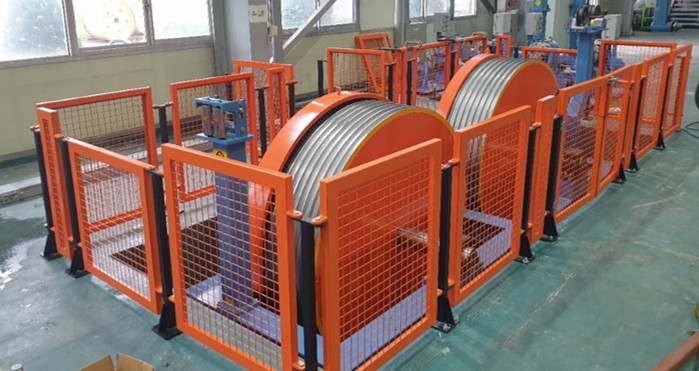
This article may interest you. The Future of Cable Manufacturing
The Importance of Regular Maintenance for Cable Manufacturing Machines: Preventing Downtime, Ensuring Quality, and Saving You Money
In the high-octane world of cable manufacturing, where meeting deadlines and production quotas is akin to a finely tuned symphony, the last thing you need is a malfunctioning machine throwing a monkey wrench (or perhaps a tangle of wires?) into your meticulously planned operations. Here, we delve into the undeniable importance of regular maintenance for cable manufacturing machines, highlighting how it acts as a triple shield, safeguarding you from costly downtime, ensuring consistent cable quality, and ultimately translating into significant cost savings.
Imagine this scenario: a crucial order for power cables is on the horizon, and your production line is humming along like a well-oiled machine. Suddenly, a critical component in your extruder sputters and fails. The line screeches to a halt, throwing your entire production schedule into disarray. Not only are you facing delays in meeting deadlines, but also the potential for frustrated customers and lost revenue. This, unfortunately, is the harsh reality that can strike when preventative maintenance for cable manufacturing machines is neglected.
Regular maintenance is the cornerstone of a smooth-running cable manufacturing operation. It’s akin to taking your car in for regular servicing – a proactive approach that nips potential problems in the bud before they blossom into full-fledged breakdowns. By consistently tending to your cable manufacturing machines, you’re essentially investing in their longevity and optimal performance, reaping a multitude of benefits in return.
Firstly, regular maintenance acts as a guardian against dreaded downtime. Think of it as a force field deflecting the negative impacts of unexpected equipment failures. Through routine inspections, technicians can identify minor issues – worn belts, loose connections, or misaligned components – before they snowball into major breakdowns that necessitate lengthy repairs and production stoppages. Early detection allows for prompt corrective actions, minimizing downtime and ensuring your production line stays on track.
A study by the National Association of Manufacturers (NAM) found that a well-implemented preventative maintenance program can reduce unplanned downtime by up to 30%, a significant statistic that translates directly to increased productivity and higher profitability.
Secondly, consistent maintenance safeguards the quality of your cables. Cable manufacturing machines are precision instruments, and even the slightest deviation from optimal performance can have a ripple effect on the final product. Regular cleaning and calibration ensure that these machines continue to operate within tight tolerances, consistently producing cables that meet the exact specifications required for your application. This translates to fewer rejects and rework, ultimately leading to a more streamlined and cost-effective production process.
Finally, and perhaps most importantly, regular maintenance for cable manufacturing machines is a strategic investment that saves you money in the long run. While the upfront costs of a preventative maintenance program may seem substantial, they pale in comparison to the hefty price tag associated with reactive maintenance. Imagine the financial burden of replacing expensive components or even entire machines due to a preventable breakdown. By proactively addressing minor issues, you’re essentially extending the lifespan of your cable manufacturing machines, reducing the need for costly replacements and repairs down the line.
In conclusion, neglecting regular maintenance for cable manufacturing machines is akin to playing a risky game of chance. By prioritizing preventative measures, you’re safeguarding your operation from costly downtime, ensuring consistent cable quality, and ultimately saving yourself significant money. Remember, a well-maintained machine is a happy machine, and a happy machine is a machine that keeps your cable production line humming along smoothly, meeting deadlines and exceeding customer expectations.
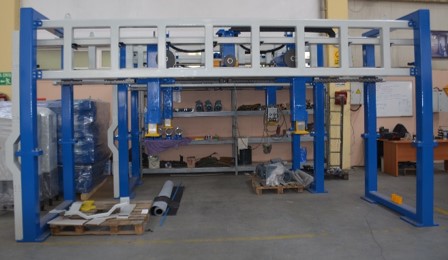
Developing a Preventative Maintenance Schedule for Your Cable Manufacturing Machines: A Tailored Approach to Peak Performance
Having championed the importance of regular maintenance for cable manufacturing machines in the previous section, we now shift gears to equip you with the tools to translate theory into action. Here, we delve into the art of crafting a customized preventative maintenance schedule, a roadmap to keeping your machines operating at peak performance.
Think of a preventative maintenance schedule as a well-worn map, guiding you through the essential maintenance tasks required for each of your cable manufacturing machines. A one-size-fits-all approach simply won’t cut it in the diverse world of cable manufacturing. Different machines, with their unique functionalities and complexities, necessitate specific maintenance requirements. For instance, the care regimen for a wire drawing machine will differ significantly from that of a high-speed strander.
The key to crafting an effective preventative maintenance schedule lies in tailoring it to the specific needs of your equipment. Here are some key considerations to keep in mind:
-
Understanding Your Machine Portfolio: The first step involves taking inventory of your cable manufacturing machines. Make a list of each machine type (e.g., extruders, bunchers, capstans) and consult the manufacturer’s recommended maintenance guidelines. These guidelines typically outline specific tasks, their frequency (daily, weekly, monthly, annually), and any special tools or lubricants required.
-
Prioritizing Tasks: Not all maintenance tasks are created equal. Some, like daily lubrication of critical components, are essential to prevent immediate issues. Others, such as in-depth inspections, can be scheduled at less frequent intervals. By prioritizing tasks based on their urgency and potential impact, you can create a more manageable and efficient maintenance schedule.
-
Frequency of Use: The more frequently you utilize a particular machine, the more intensive its maintenance needs become. High-production machines naturally experience greater wear and tear, necessitating more frequent inspections and adjustments compared to their less-used counterparts.
-
Tracking Maintenance History: Developing a paper trail is crucial for effective preventative maintenance. Maintain a detailed logbook for each machine, meticulously recording completed maintenance tasks, identified issues, and any corrective actions taken. This historical data provides valuable insights, allowing you to refine your maintenance schedule over time and identify potential problem areas within your machines.
Several digital tools can further enhance your preventative maintenance efforts. Cloud-based maintenance management software allows for easy scheduling, task assignment, and real-time data tracking. Additionally, some cable manufacturing machines are equipped with built-in condition monitoring systems that can provide real-time data on key operating parameters, enabling proactive maintenance before issues arise.
By following these guidelines and leveraging available technologies, you can craft a preventative maintenance schedule that is tailored to your specific cable manufacturing operation. Remember, a well-defined and consistently implemented schedule is the cornerstone of keeping your machines running smoothly, ensuring consistent cable quality, and maximizing your overall production efficiency.
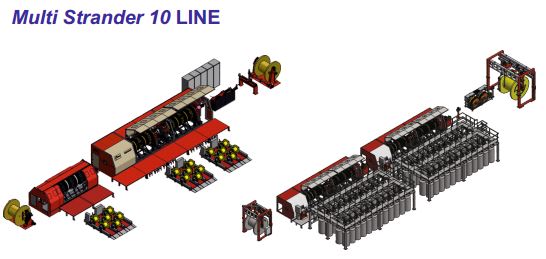
Key Maintenance Tasks for Cable Manufacturing Machines: Keeping Your Operation Running Like Clockwork
Now that we’ve established the importance of preventative maintenance and explored the art of crafting a customized schedule, let’s delve into the nitty-gritty – the essential maintenance tasks that keep your cable manufacturing machines humming along like a well-oiled clock.
Imagine your cable manufacturing facility as a symphony orchestra, each machine playing a vital role in the production process. Regular maintenance ensures that every instrument is in tune, working seamlessly together to produce high-quality cables. Here are some key maintenance tasks to consider incorporating into your schedule, keeping your cable production line in perfect harmony:
-
Cleaning and Lubrication: Just like a car engine needs regular oil changes, your cable manufacturing machines require consistent cleaning and lubrication. Following the manufacturer’s recommendations, routinely clean away dust, debris, and wire particles that can accumulate on critical components. Apply the appropriate lubricants to reduce friction, minimize wear and tear, and ensure smooth operation. This seemingly simple task goes a long way in preventing overheating, premature component failure, and ultimately, costly downtime.
-
Inspection and Tightening: Think of this as a regular check-up for your machines. Schedule periodic inspections to identify any loose bolts, misaligned components, or signs of wear on belts, pulleys, and other critical parts. A timely tightening of a loose bolt can prevent a major breakdown down the line. Don’t underestimate the power of vigilance! Early detection and correction of minor issues nip problems in the bud before they blossom into production-halting complications.
-
Calibration of Sensors and Control Systems: The accuracy of your cable manufacturing machines hinges on properly functioning sensors and control systems. These systems ensure that critical parameters, such as wire diameter, tension, and temperature, are maintained within precise tolerances. Regular calibration, using certified tools and following manufacturer’s specifications, safeguards the integrity of your production process and guarantees that your cables meet the required specifications.
-
Monitoring and Replacing Wearable Parts: Cable manufacturing machines are workhorses, and even the most robust components experience wear and tear over time. Proactive monitoring of wearable parts, such as cutting blades, dies, and bearings, is essential. By tracking their performance and adhering to recommended replacement intervals, you can prevent unexpected breakdowns and maintain consistent cable quality. Remember, a stitch in time saves nine, and the same principle applies to preventative maintenance in cable manufacturing.
While these are some of the core maintenance tasks, the specific needs may vary depending on your machinery. It’s crucial to consult your cable manufacturing machine manuals for detailed instructions and manufacturer-recommended maintenance schedules. Additionally, don’t hesitate to seek guidance from qualified maintenance technicians who possess the expertise to identify potential issues and recommend appropriate corrective actions.
By faithfully implementing these key maintenance tasks, you’ll be well on your way to keeping your cable manufacturing operation running smoothly and efficiently. Remember, consistent care is the secret ingredient for maximizing the lifespan and performance of your valuable equipment. The rewards are plentiful – reduced downtime, improved cable quality, and ultimately, a significant boost to your bottom line.
Troubleshooting Common Issues with Cable Manufacturing Machines: Turning Headaches into Hiccups
Even with the most diligent preventative maintenance plan, the occasional hiccup is inevitable in the world of cable manufacturing machines. Machines are, after all, complex pieces of equipment, and unforeseen issues can arise. The key is to be prepared and possess the knowledge to effectively troubleshoot these problems, transforming potential headaches into minor inconveniences.
Imagine this scenario: your cable production line grinds to a halt, and the culprit? An unexpected anomaly with your capstan, the workhorse responsible for maintaining consistent wire tension. While a cause for concern, there’s no need to panic. By possessing a basic understanding of common cable manufacturing machine issues and employing some tried-and-true troubleshooting techniques, you can get your production line back up and running in no time.
Here are some pointers to equip you for troubleshooting common cable manufacturing machine problems:
-
Identifying Signs of Machine Wear and Tear: The first line of defense lies in vigilance. Train your operators to be attentive to any sights or sounds that deviate from the machine’s normal operation. Unusual vibrations, screeching noises, or a burning odor can all be indicators of potential problems. Early detection allows for prompt intervention, preventing minor issues from snowballing into major breakdowns.
-
Strategies for Diagnosing and Addressing Common Problems: While consulting your machine manuals and seeking assistance from qualified technicians is always recommended, there are some basic troubleshooting strategies you can employ. For instance, a drop in cable quality might be attributed to clogged dies or misaligned rollers. A quick cleaning or adjustment could be the remedy. Similarly, a fluctuation in temperature could be indicative of a malfunctioning cooling system, requiring a technician’s expertise for repair. The key lies in pinpointing the source of the problem and taking appropriate action.
-
The Importance of Consulting Machine Manuals and Specialists: Remember, you don’t have to be a cable manufacturing machine whisperer to navigate basic troubleshooting. Your machine manuals are invaluable resources, providing detailed information on common problems, potential causes, and recommended corrective actions. For more complex issues, don’t hesitate to seek the guidance of qualified maintenance technicians. These skilled professionals possess the expertise to diagnose intricate problems and implement effective repairs, minimizing downtime and ensuring a swift return to normal operations.
By empowering your operators with basic troubleshooting skills and fostering a culture of proactive problem identification, you can transform your cable manufacturing operation into a self-aware and responsive production line. Remember, a timely response to even the most minor glitch can prevent a cascade of issues, keeping your production humming along smoothly.
Investing in Operator Training for Effective Cable Manufacturing Machine Maintenance: Empowering Your Team for Peak Performance
In the intricate world of cable manufacturing, where precision and efficiency reign supreme, your machinery is only as good as the people who operate and maintain it. While robust preventative maintenance schedules and cutting-edge technologies play a crucial role, empowering your operators with basic maintenance skills is an often-overlooked strategy that can yield significant benefits.
Imagine your cable manufacturing operation as a well-oiled machine (quite literally in this case!), and your operators are the ones keeping it running smoothly. Equipping them with the knowledge to perform basic maintenance tasks transforms them from passive observers into active participants in safeguarding the health and performance of your equipment.
Here’s why investing in operator training for cable manufacturing machine maintenance is a wise decision:
-
Empowering Operators with Basic Maintenance Skills: By equipping your operators with a foundational understanding of common maintenance tasks, such as cleaning, lubrication, and basic visual inspections, you create a proactive team. They become the first line of defense, identifying potential issues before they snowball into major problems. A watchful operator who notices a slight misalignment in a capstan roller can flag the issue for a technician’s review, potentially preventing a cable quality issue down the line.
-
Encouraging Proactive Identification of Potential Issues: When operators are vested in the smooth operation of the cable manufacturing line, they become more attuned to subtle changes in machine performance. Training empowers them to recognize the telltale signs of potential trouble – unusual vibrations, fluctuations in temperature, or changes in cable quality. This proactive identification allows for early intervention, preventing minor issues from evolving into production-halting breakdowns. Remember, a stitch in time saves nine, and the same principle applies to cable manufacturing machine maintenance.
-
The Role of Operators in Maintaining a Clean and Safe Work Environment: A clean and organized work environment is paramount for the smooth operation and longevity of cable manufacturing machines. By training operators on proper cleaning procedures, you ensure that dust, debris, and wire particles don’t accumulate on critical components. This not only safeguards the machines but also promotes a safer work environment for your operators. A clean and well-maintained workspace fosters a sense of ownership and responsibility amongst operators, further motivating them to take pride in keeping the production line running smoothly.
Operator training programs can be tailored to your specific needs and equipment. Manufacturer-provided training courses are an excellent starting point, equipping operators with a comprehensive understanding of their specific machines. Additionally, consider incorporating on-the-job training sessions led by experienced maintenance technicians. These sessions allow for hands-on learning and provide a platform for operators to ask questions and gain practical experience.
Investing in operator training for cable manufacturing machine maintenance is a strategic decision with a high return on investment. Empowered operators become active partners in safeguarding your equipment, fostering a culture of preventative care that translates into fewer breakdowns, improved cable quality, and ultimately, a more efficient and profitable cable manufacturing operation.
Utilizing Technology to Enhance Cable Manufacturing Machine Maintenance: Embracing the Power of Predictive Practices
The relentless march of technology has revolutionized countless industries, and cable manufacturing is no exception. In the realm of machine maintenance, innovative technologies are emerging to empower us to shift from a reactive to a predictive approach. Imagine this: instead of waiting for a machine to break down before taking action, what if you could anticipate potential problems and address them proactively? This is the power of predictive maintenance, and it’s poised to transform how you care for your cable manufacturing machines.
Here’s how embracing technology can enhance your cable manufacturing machine maintenance strategy:
-
Condition Monitoring Systems for Early Detection of Problems: Gone are the days of relying solely on the human eye for identifying machine issues. Advanced condition monitoring systems, equipped with sensors strategically placed throughout your machines, can collect real-time data on critical parameters like vibration, temperature, and power consumption. By analyzing this data using sophisticated algorithms, these systems can identify subtle changes that might foreshadow potential problems. Imagine being alerted to a developing bearing issue in your extruder well before it progresses to a costly breakdown. This allows for proactive maintenance, preventing downtime and safeguarding the integrity of your cable production process.
-
Digital Maintenance Logs and Data Analysis: Say goodbye to paper-based maintenance logs that gather dust in filing cabinets. Digital maintenance logs, accessible via cloud-based software platforms, provide a centralized and readily accessible repository for all your machine maintenance data. This data, encompassing maintenance tasks performed, replacement parts used, and any identified issues, becomes a treasure trove of insights. By employing data analysis tools, you can identify trends and patterns, allowing you to refine your preventative maintenance schedule and optimize resource allocation. For instance, you might discover that a particular machine type experiences a higher rate of belt failures. Armed with this knowledge, you can implement a more frequent belt inspection schedule for these machines, preventing potential production stoppages.
-
The Benefits of Predictive Maintenance Strategies: The transition from reactive to predictive maintenance offers a multitude of benefits for your cable manufacturing operation. Firstly, it minimizes the risk of unexpected breakdowns, safeguarding your production schedule and ensuring timely delivery of cables to your customers. Secondly, it allows for the optimization of maintenance resources, focusing attention on machines that truly require it. Thirdly, by addressing issues before they escalate into major failures, you can extend the lifespan of your cable manufacturing machines, reducing the need for costly replacements. A study by The Society for Maintenance & Reliability Professionals found that companies that implement predictive maintenance strategies experience a 25% reduction in unplanned downtime and a 30% increase in equipment lifespan – compelling statistics that validate the power of this approach.
Technology is not a magic bullet, but it’s a powerful tool that, when coupled with established preventative maintenance practices, can elevate your cable manufacturing operation to a whole new level of efficiency. By embracing condition monitoring systems, digital maintenance logs, and predictive maintenance strategies, you gain the power to anticipate potential problems and take action before they disrupt your production flow. Remember, in the fast-paced world of cable manufacturing, a proactive approach is the key to keeping your machines running smoothly, your cables defect-free, and your bottom line healthy.


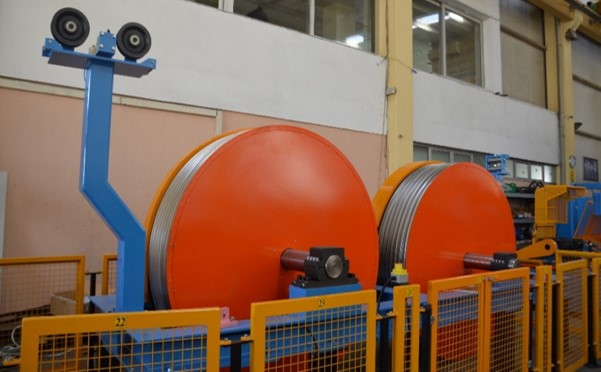
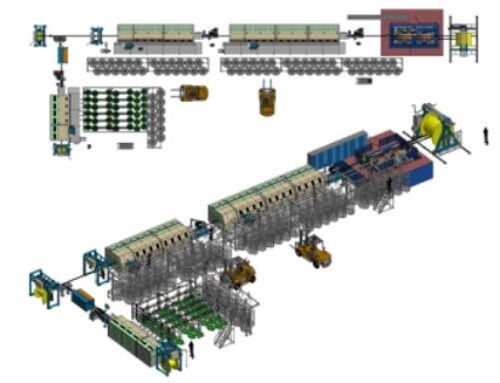
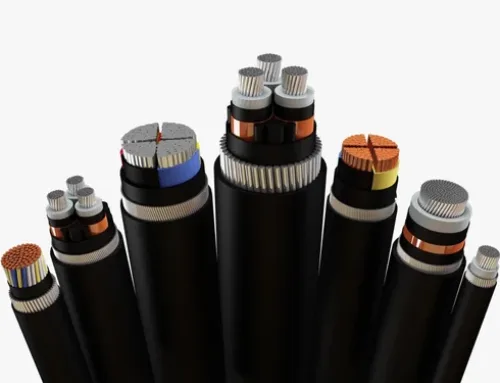
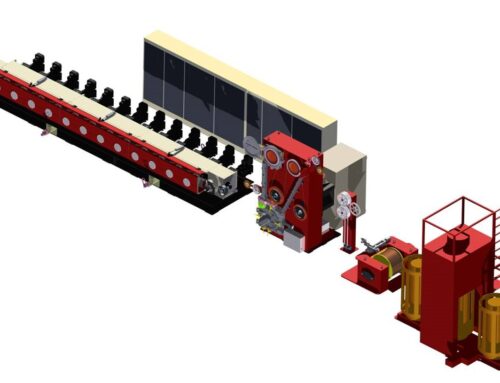
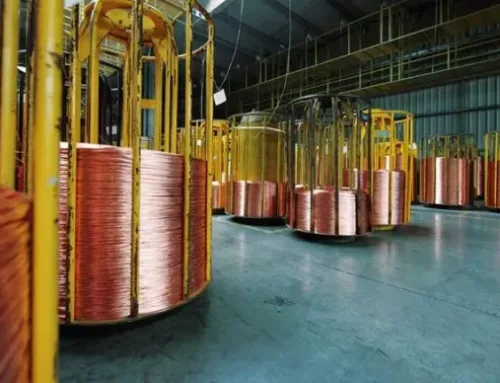
[…] You may be interested in this article. Essential Maintenance Tips for Cable Manufacturing Machines […]